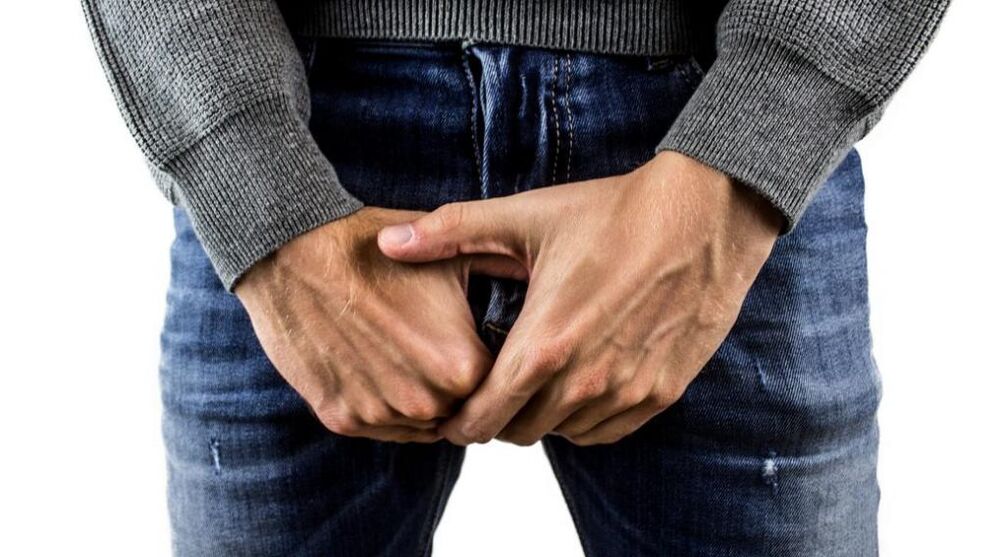
Prostatitis is a genitourinary disease in which urination is difficult due to inflammation and pathological enlargement of the prostate gland. This pathology is most common in men between the ages of 20 and 50. Also note that symptoms of prostatitis may not appear in any way for a long time.
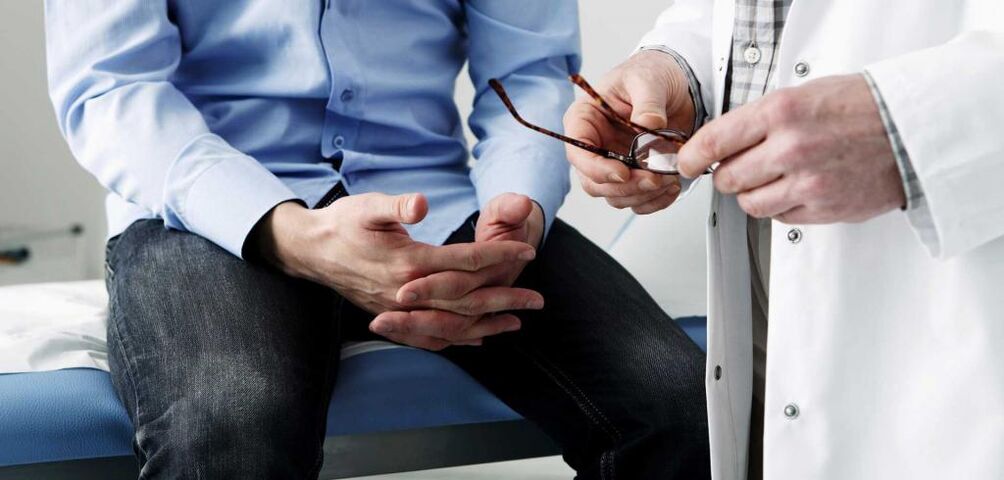
reason
Causes:
- Genetic susceptibility to the disease.
- Circulatory disorder.
- inactive lifestyle.
- Pathology of the formation and development of the urogenital system.
- Infectious diseases.
- Pelvic organ damage.
- hormone imbalance.
- Delay STDs.
- Insufficient bowel movements.
- Violation of personal hygiene regulations.
- promiscuous sexual relations.
- Use a urinary catheter.
- low temperature.
- Age-related physical changes.
All of these factors can induce the development of prostate adenomas in men. It should also be noted that under no circumstances should you attempt to fix this problem yourself, as this can aggravate the disease process.
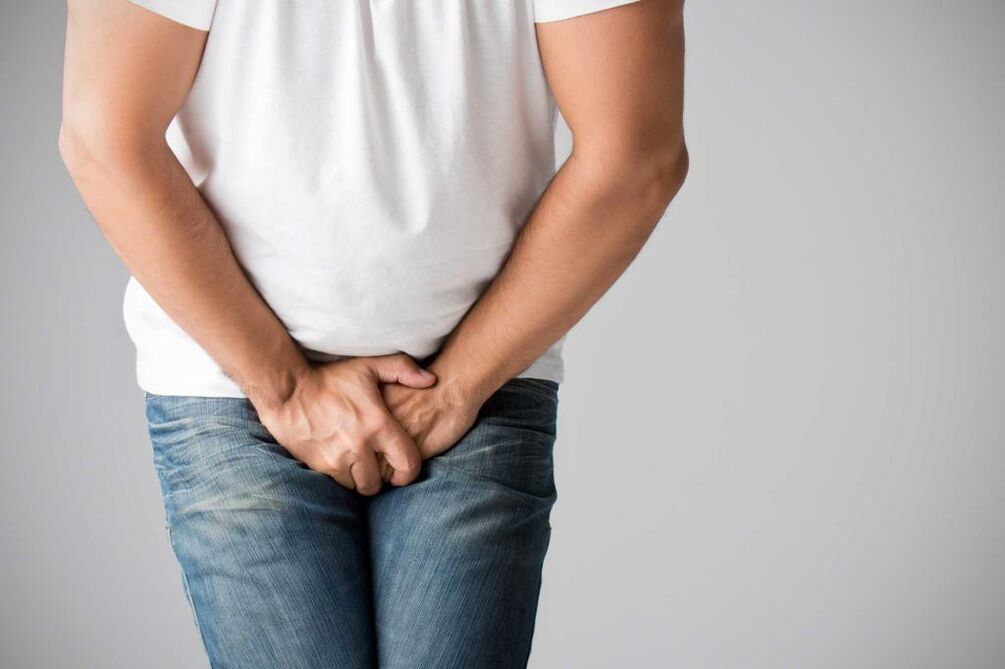
symptom
Symptoms of acute prostatitis are increased body temperature and frequent urination, accompanied by pain and weakness. Also, indicators of prostatitis are perineal burning and rectal pain during bowel movements. During purulent inflammation, an abscess may accidentally open and discharge pus from the urethra or rectum.
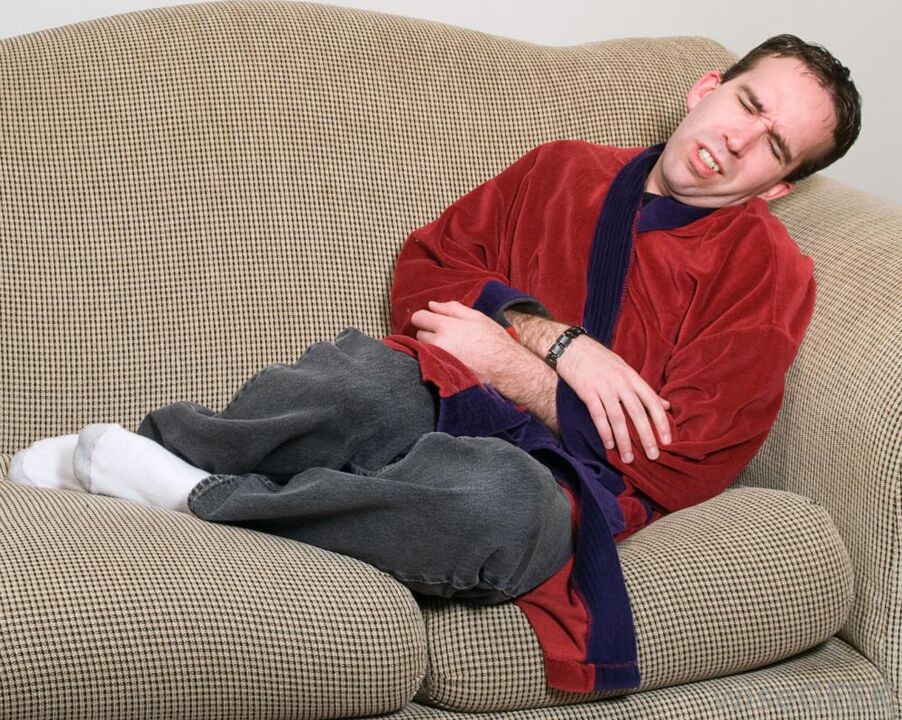
Signs of chronic prostatitis are a strong burning sensation in the urethra and perineum, the release of pus at the end of the defecation or urination process, and a high degree of weakness and nervousness in men.
Difficulty urinating with prostatitis is very dangerous and, if not treated quickly, can lead to acute urinary retention.
Men do not need to ignore indirect symptoms of the development of prostatitis, such as absolute or partial reduction in libido, accelerated ejaculation, pain in some cases, prolonged nighttime erections. All signs are characteristic of prostate inflammation while still being in a simple stage and receiving appropriate treatment.
If we talk about manifestations that are evident even to non-professionals, then in most cases the patient notices a colorless or in some cases purulent discharge from the urethra, especially evident in the morning, and the presence of white patchesshape and thread in the urine.
When symptoms of prostatitis occur, treatment and medication can only be prescribed by a specialist.
diagnosis
The severity of disease symptoms simplifies diagnosis, however, diagnosis is necessary to distinguish adjacent diseases.
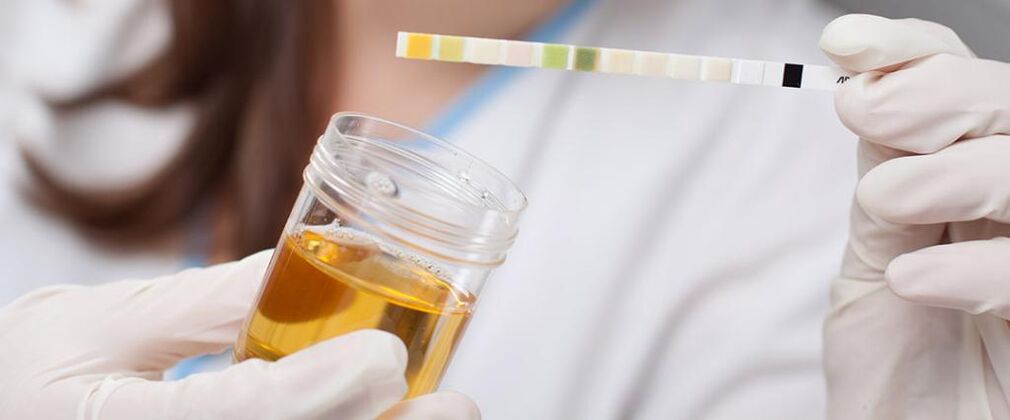
For an effective comprehensive treatment of prostatitis, including medicines and home remedies, timely diagnosis of the disease is required by various methods, which must be carried out to obtain accurate data:
- Collection of memory data. It is the primary method of gathering information, investigating the nature of patient complaints.
- Rectal palpation. The patient is examined at the knee and elbow, and the doctor inserts the index finger into the anus and gently palpates the prostate. This method allows you to determine the intensity of the pain and the enlargement of the organ.
- Have an ultrasound. It does so in two ways. It is done either through the abdominal wall or by introducing the device into the anatomical cavity of the rectum. For this study, it was necessary to stick to the diet and have a complete bowel movement. This method allows you to obtain clear information about the nature of the disease.
- A study of general analysis of urine. It is used to study the nature of inflammation and to analyze bacterial flora.
- Testosterone level analysis. It is an additional diagnostic method that allows you to determine the functional characteristics of sperm.
- Study the patient's physical condition.
medical treatement
A complete set of drugs for prostatitis: hormones, anti-inflammatory, immune-stimulating drugs and powerful antibiotics. They can all communicate with each other and complement the folk methods.
antibiotic
To quickly clear disease-causing bacteria, experts prescribe antibiotics to patients. Formulations of this type may be in the form of tablets, capsules, rectal suppositories.
For the treatment to work well, you need to take the medicine for at least 2-3 weeks.
Anti-inflammatory (medicine)
If this treatment is ineffective, or if the disease does not appear due to the development of bacteria, doctors will prescribe anti-inflammatory drugs.
This type of medication relieves inflammation and reduces swelling. The patient feels much better due to the analgesic effect. You need to take medicines for a short period of time because they can negatively affect the functioning of the digestive system.
alpha blocker
During treatment, the condition can improve rapidly with the help of alpha-blockers. These drugs help improve urinary and sexual function. The drug acts directly on the nervous system responsible for the work of the urethra and bladder muscles. As a result, cramps are reduced, urination pain is gone, and inflammation is reduced.
rectal suppository
To make the treatment as safe as possible without affecting the kidneys and liver, you can use rectal suppositories. Usually they include pain relievers, herbs, bee products, antibiotics.
Candles help reduce inflammation, swelling and pain. Restore blood circulation and urination. The usual course of treatment is 10 days.
immunomodulator
Immunomodulators are necessary to support the body during treatment, improve the function of the immune system and the general condition of the patient. With the help of hormonal drugs, inflammation can be eliminated and sexual function restored. It is usually prescribed if the patient has low androgen levels.
folk method
Effective treatment of prostatitis with folk remedies involves the use of various fees and herbs. In some cases, experts independently recommend combining alternative treatments with traditional treatments to speed up the onset of effects.

Popular recipes include:
- Celandine with honey. It is recommended to be used after completing a complex course of treatment. It is important to know that celandine is strictly contraindicated in the presence of acute inflammation and should only be treated once it has subsided. Next, the celandine must be boiled at a ratio of 1: 7 and placed on the fire for 15 minutes. After the solution has cooled, it must be filtered through gauze and 500 grams of natural honey is added. To achieve the desired effect, the contents must be kept in the refrigerator and then used at least 3 tablespoons per day (it is best to divide them into 3 doses).
- Hazel or its bark. They work the same on the body, so they can be brewed alternately. It is important to remember that the bark should take 2x longer to cook due to its natural hardness. Dissolve a tablespoon of hazelnuts in a cup of boiling water, let it sit for half an hour, then add the solution to a quarter cup several times a day. Fresh branches need to be brewed before each surgery. Usually, just a few procedures are enough to make prostatitis go away completely.
- The complex treatment of prostatitis in men at home also includes aspen. In addition to hazel bark, you can also use the bark of this tree. The disadvantage of this method is that only fresh aspen bark harvested in the second half of April will do. The thickness of the bark should also not exceed 5 mm. The bark must be dried, then crushed and poured with 200 grams of vodka. In order to infuse the solution, it must be sent to a dark place for 2 weeks. The tincture should then be drunk, diluted with another liquid, at least 3 times a day. The indicated dose should be sufficient for at least 2 months of treatment.
- In the treatment of prostatitis, the most effective folk remedies are wormwood. The plant is known for being recommended for any inflammatory disease of the genitourinary system, prostatitis is no exception. Due to its properties, wormwood can cleanse the body of infectious agents as it passes through the gastrointestinal tract. For treatment, only 100 grams of hay is sufficient, which should be crushed by hand and passed through a colander. Therefore, two kinds of wormwood should be obtained - the past screening can be consumed dry inside, and the one left outside can be used for rinsing solution. Change the way you take wormwood throughout your treatment. For the first few days, you need to take a pinch of dried wormwood every 2 hours, even at night. Also, for 4 days, it is no longer necessary to take the plant at night, but during the day - at least 5-6 times. You should also do micro-irrigation every night. To do this, take 1 tablespoon of wormwood and dilute it with a liter of boiling water. When the solution cools to 40 degrees, it should be filtered and poured into the anus. The same solution must be used when rinsing - for this, the temperature should be approximately the same as body temperature. The edges of the meat should be pulled back and the solution injected, allowing it to pass further along the canal. If used properly, after a few days, pus will begin to flow out of the channel.
These herbs are considered to be the most commonly used herbs for the treatment of prostatitis and have been proven. Before using home remedies to effectively treat prostatitis, it is recommended to additionally ensure that there is no allergic reaction, and if you find side effects, please stop taking it.
squat
Weakening and atrophy of the muscles of the perineum in men can lead to deterioration of the blood supply and venous outflow in the prostate. This is why physical exercises like squats have a very beneficial effect on the male genitourinary system. Regular squats can keep your perineal muscles in good shape, which in turn ensures good erectile function and prostate health.

Consider the most effective types of squats as a treatment for prostatitis:
- Classic squat. You must stand up straight with your feet shoulder-width apart. The squat is performed by bending the legs at the knees, without lifting the heels off the floor, with a straight back, preferably below the level of the pelvis.
- Squat on an "invisible" imaginary chair.
- Squat down with one leg and extend the other leg forward. I must say, this exercise is for men who are physically prepared.
- Squats add weight, the barbell. It's best to do these types of squats with lighter weights after consulting with a urologist. You'll want to start the squat complex with a small number of repetitions (up to 10 reps) and gradually increase it, ideally up to 100 reps.
prevention
The prevention of prostatitis that occurs in the prostate due to inflammatory processes can be divided into two types, namely:
- Prevention of primary development of disease;
- Prevention of re-inflammation after treatment of already diagnosed prostatitis.
The preventive measures in both cases are similar in nature and men at risk (after age 30, sedentary lifestyle, work related to vibrations in the pelvic area, unstable or irregular sex life, hypothermia) shouldConsider taking precautions.
Suggest
Therefore, in the prevention and prevention of prostatitis conditions, you need to detail the following points:
- physical activities. At the same time, attention should be paid to outdoor sports, swimming, and fitness to prevent recurrence of the disease, and to avoid excessive physical exertion (strength exercise) and cycling.
- Normalization and control of nutrition i. e. excess fat, smoked, fried, salted and salty foods should be limited. Nutritional focus should be on foods that normalize bowel function (prevent hemorrhoids), drink plenty of water, and minimize alcohol consumption.
- Normalization of sex life (frequent partner changes can lead to various infections in the genital area, which can lead to inflammation of the prostate).
Also, having regular sex with a regular partner (2-3 times a week) will help prevent congestion and ensure good blood circulation within the prostate.






























